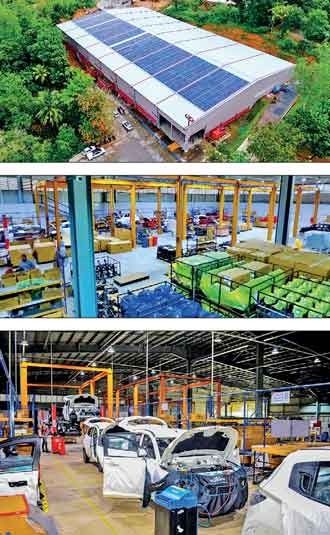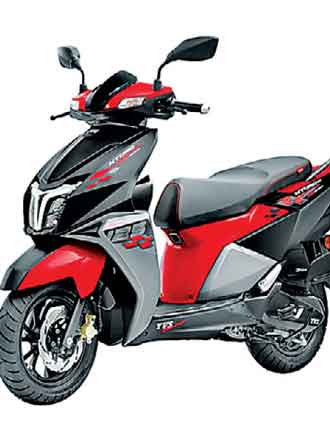Sunday Apr 20, 2025
Sunday Apr 20, 2025
Monday, 6 January 2025 03:09 - - {{hitsCtrl.values.hits}}


 Sri Lanka’s local assembly and automotive component manufacturing sector has become a significant pillar of the nation’s economy, driving job creation, conserving foreign exchange, and fostering technical innovation.
Sri Lanka’s local assembly and automotive component manufacturing sector has become a significant pillar of the nation’s economy, driving job creation, conserving foreign exchange, and fostering technical innovation.
Operating under the Ministry of Industries’ Standard Operating Procedure (SOP), the industry currently boasts over 17 assembly plants producing a range of vehicles, including motorcars, SUVs, motorcycles, and electric three-wheelers. An additional 17 more investors are preparing to launch their operations in Sri Lanka, signalling robust industry growth.
The sector has directly employed over 5,000 technically skilled workers, including recent graduates and on-the-job trainees, contributing to the development of Sri Lanka’s human capital. Indirectly, it supports more than 10,000 jobs, creating an extensive ecosystem that sustains the livelihoods of thousands of families.
During the temporary suspension of vehicle imports, the local assembly industry demonstrated its strategic importance by reducing reliance on imported Completely Built Units (CBUs). This shift preserved valuable foreign exchange reserves and underscored the viability of local manufacturing. Global automotive giants such as Hyundai, TVS, Bajaj, Mahindra, TATA, Lanka Ashok Leyland, DFSK, Foton, JAC, JMC, Chery, Proton, Wuling, and BAIC have established operations in Sri Lanka, showcasing the industry’s capacity to attract renowned international brands.
Sri Lanka’s component manufacturing sector has evolved to produce high-quality automotive parts, including batteries, tyres, bumpers, exhaust systems, seats, plastic parts, composite parts, liners, wire harnesses, rubber components, and metal components. These advancements have elevated the sector to international standards, positioning Sri Lanka as a competitive player in the regional automotive supply chain.
The industry is setting ambitious yet achievable goals. Within the next five years, it aims to export vehicles and components, increasing component export revenues from $ 800 million to $ 2 billion and creating an additional 45,000 jobs. Drawing inspiration from countries like Thailand and Malaysia, Sri Lanka’s strategic geographic location, government incentives, and developing supply chain infrastructure provide a robust foundation for this vision.
As the Government deliberates lifting the temporary suspension on CBU imports, industry stakeholders urge the implementation of a competitive tax structure  that prioritises locally assembled vehicles. Such measures will sustain the sector’s growth trajectory, attract further investments, and secure its long-term viability.
that prioritises locally assembled vehicles. Such measures will sustain the sector’s growth trajectory, attract further investments, and secure its long-term viability.
Sri Lanka’s local assembly and component manufacturing industries represent more than economic activity — they symbolise the nation’s industrial progress and untapped potential. With strategic policies and continued support, this sector can propel Sri Lanka toward sustainable industrial and economic prosperity.